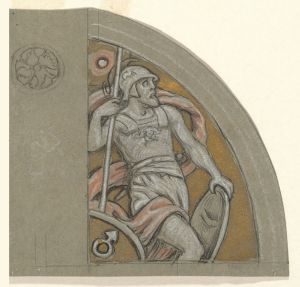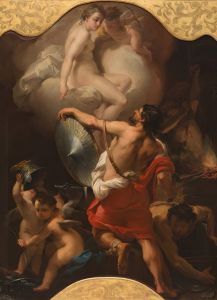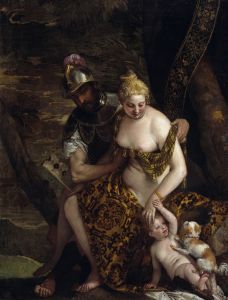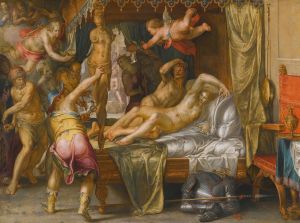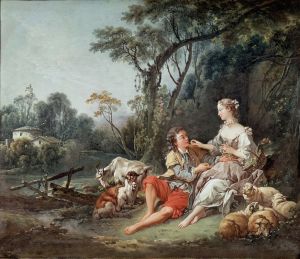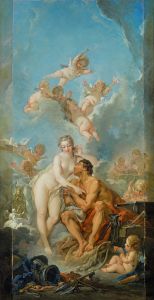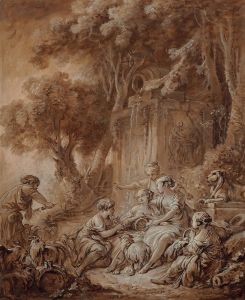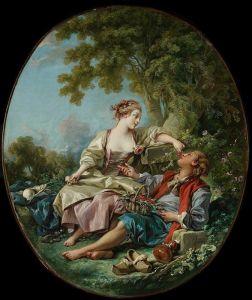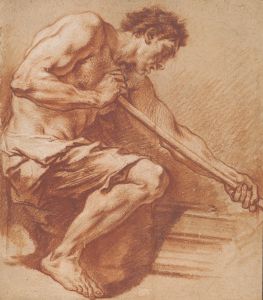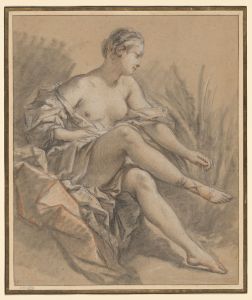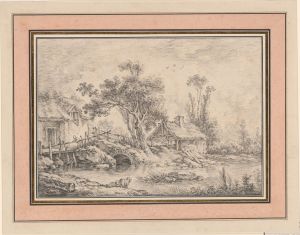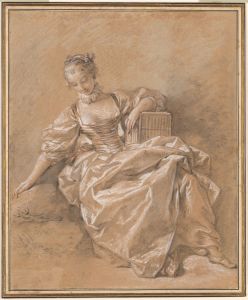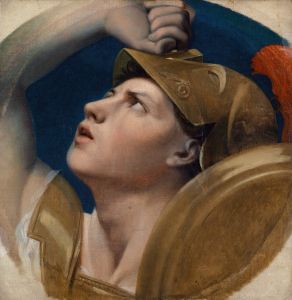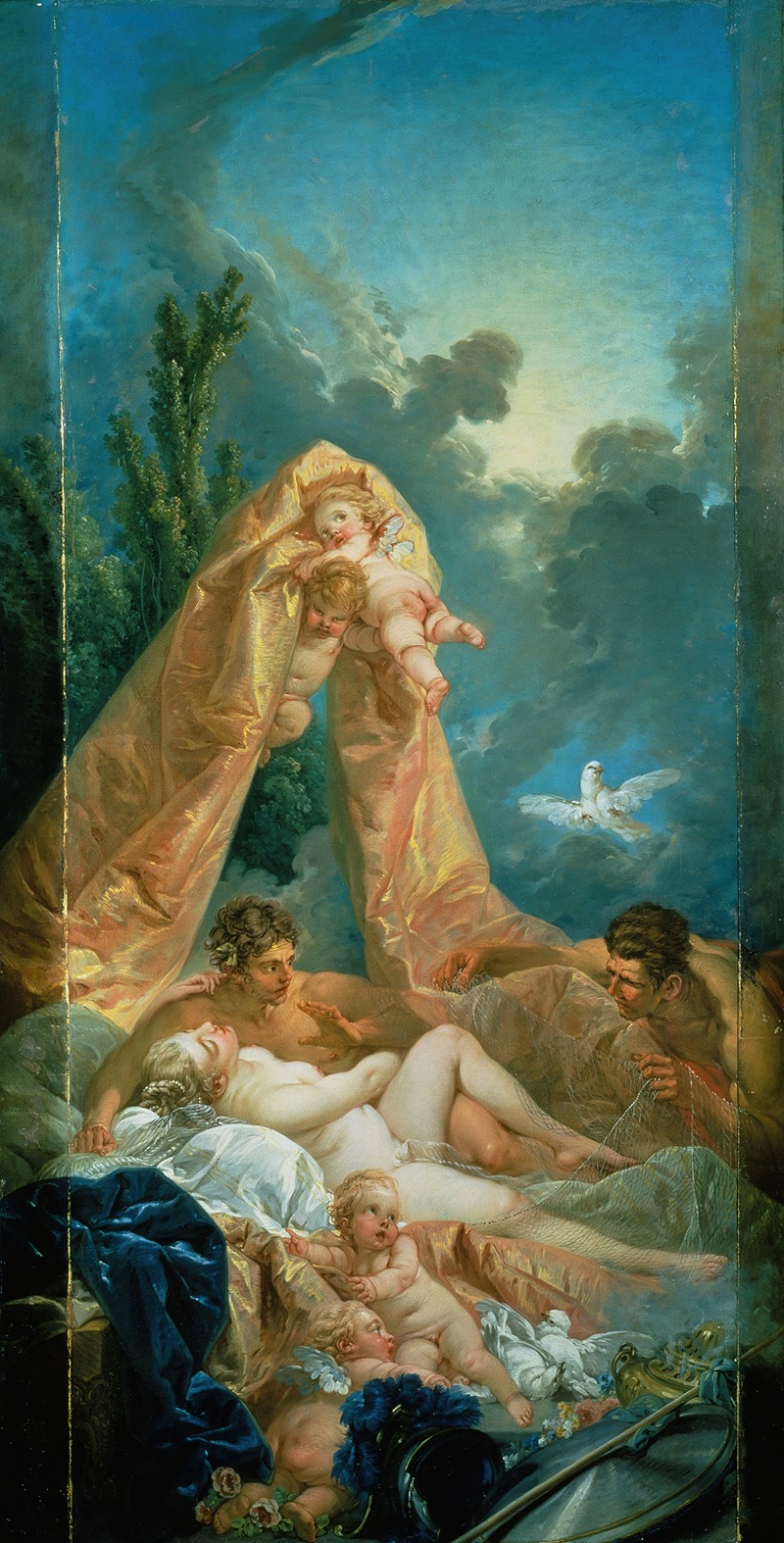
Mars and Venus surprised by Vulcan
A hand-painted replica of François Boucher’s masterpiece Mars and Venus surprised by Vulcan, meticulously crafted by professional artists to capture the true essence of the original. Each piece is created with museum-quality canvas and rare mineral pigments, carefully painted by experienced artists with delicate brushstrokes and rich, layered colors to perfectly recreate the texture of the original artwork. Unlike machine-printed reproductions, this hand-painted version brings the painting to life, infused with the artist’s emotions and skill in every stroke. Whether for personal collection or home decoration, it instantly elevates the artistic atmosphere of any space.
"Mars and Venus Surprised by Vulcan" is a painting by the French Rococo artist François Boucher, created in 1754. Boucher was one of the most celebrated painters of the 18th century, known for his idyllic and voluptuous depictions of classical themes, decorative allegories, and pastoral scenes. This particular work is a fine example of his mastery in portraying mythological subjects with a playful and sensuous touch.
The painting depicts a scene from Roman mythology involving the gods Mars, Venus, and Vulcan. According to the myth, Venus, the goddess of love, and Mars, the god of war, were lovers. Vulcan, the god of fire and metalworking, and the husband of Venus, discovered their affair. In Boucher's rendition, the moment captured is one of surprise and revelation. Mars and Venus are shown in a compromising position, with Vulcan uncovering their illicit liaison.
Boucher's composition is both dynamic and intimate, characterized by its soft, pastel color palette and fluid, graceful lines. The figures of Mars and Venus are rendered with a sensuous elegance, their bodies intertwined in a manner that highlights their physical beauty and emotional connection. Vulcan, in contrast, is depicted with a more rugged and muscular physique, emphasizing his role as the wronged husband and the god of craftsmanship.
The painting is rich in symbolic details. Mars is often associated with strength and valor, while Venus embodies beauty and love. Vulcan's presence introduces an element of conflict and retribution, as he is traditionally depicted as a skilled but often vengeful craftsman. The setting of the scene is typically lush and opulent, filled with luxurious drapery, classical architecture, and an abundance of natural elements, all hallmarks of Boucher's Rococo style.
"Mars and Venus Surprised by Vulcan" is notable not only for its artistic qualities but also for its reflection of the cultural and social attitudes of the time. The Rococo period was marked by a fascination with themes of love, eroticism, and the complexities of human relationships. Boucher's work often explored these themes with a lighthearted and decorative approach, appealing to the tastes of the French aristocracy.
The painting is housed in the Wallace Collection in London, a museum renowned for its extensive collection of fine and decorative arts. The Wallace Collection provides a fitting home for Boucher's work, as it offers a comprehensive view of the artistic achievements of the 18th century, including the Rococo movement to which Boucher made significant contributions.
In summary, "Mars and Venus Surprised by Vulcan" by François Boucher is a quintessential example of Rococo art, blending mythological storytelling with exquisite craftsmanship and a keen sense of drama and emotion. The painting continues to be admired for its beauty, technical skill, and the insight it provides into the artistic and cultural milieu of 18th-century France.





